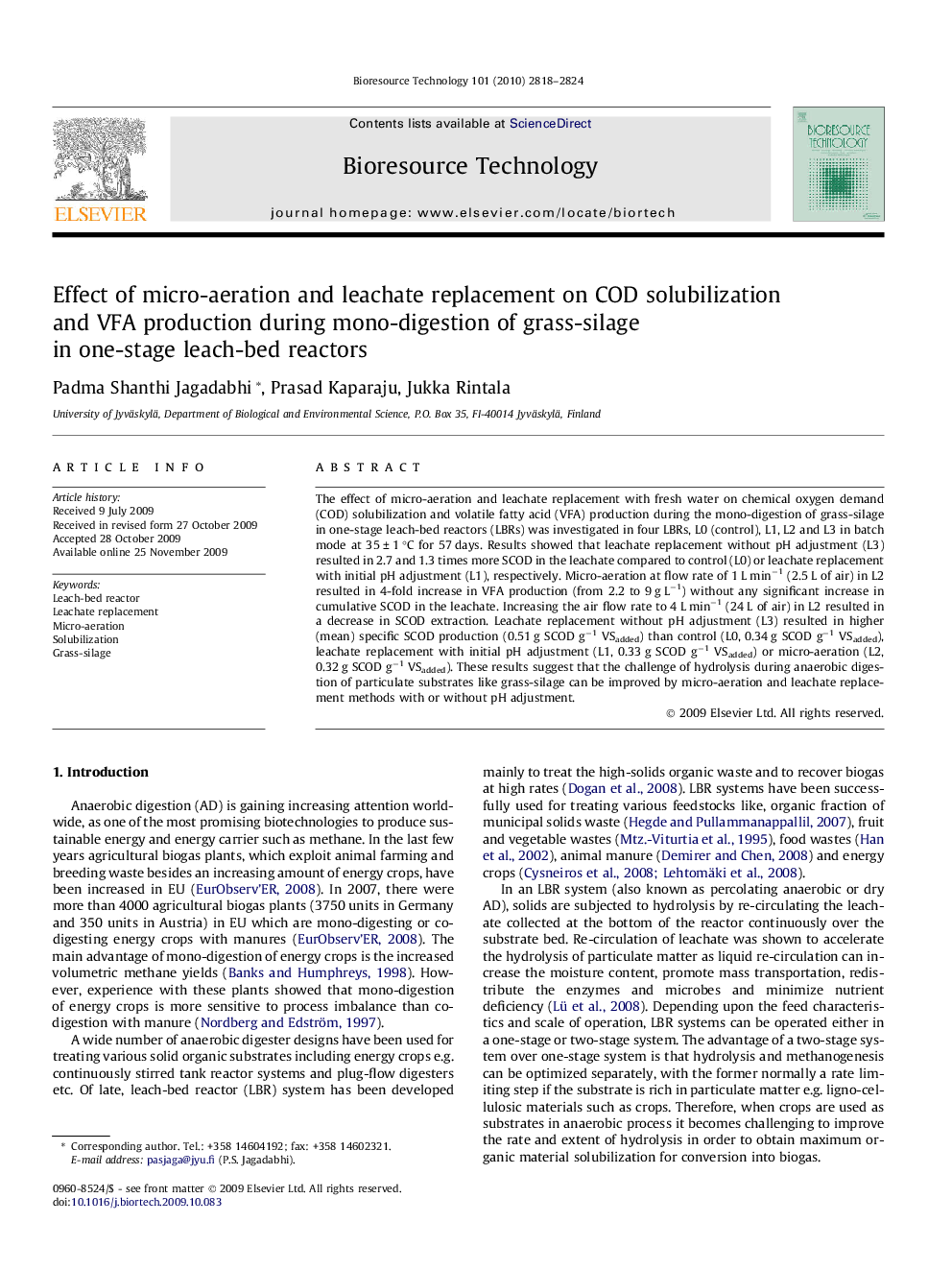| Article ID | Journal | Published Year | Pages | File Type |
|---|---|---|---|---|
| 683051 | Bioresource Technology | 2010 | 7 Pages |
The effect of micro-aeration and leachate replacement with fresh water on chemical oxygen demand (COD) solubilization and volatile fatty acid (VFA) production during the mono-digestion of grass-silage in one-stage leach-bed reactors (LBRs) was investigated in four LBRs, L0 (control), L1, L2 and L3 in batch mode at 35 ± 1 °C for 57 days. Results showed that leachate replacement without pH adjustment (L3) resulted in 2.7 and 1.3 times more SCOD in the leachate compared to control (L0) or leachate replacement with initial pH adjustment (L1), respectively. Micro-aeration at flow rate of 1 L min−1 (2.5 L of air) in L2 resulted in 4-fold increase in VFA production (from 2.2 to 9 g L−1) without any significant increase in cumulative SCOD in the leachate. Increasing the air flow rate to 4 L min−1 (24 L of air) in L2 resulted in a decrease in SCOD extraction. Leachate replacement without pH adjustment (L3) resulted in higher (mean) specific SCOD production (0.51 g SCOD g−1 VSadded) than control (L0, 0.34 g SCOD g−1 VSadded), leachate replacement with initial pH adjustment (L1, 0.33 g SCOD g−1 VSadded) or micro-aeration (L2, 0.32 g SCOD g−1 VSadded). These results suggest that the challenge of hydrolysis during anaerobic digestion of particulate substrates like grass-silage can be improved by micro-aeration and leachate replacement methods with or without pH adjustment.
